Matt Ownby's
Reflective Water for Quake2
GOAL: To create more realistic looking water by adding a
reflection which can be distorted like real reflections are.
Therefore my method is to render the reflection into a texture so that
it can easily be distorted. The other method of reflection of
which I am aware is to use the stencil buffer and draw the reflection
normally with the vertical portion of the vertices flipped. This
is adequate if trying to create a regular mirror, but of course won't
work with water! In order to learn how to do this, I referred to this site.
Below are screenshots of my
progress:
Before September 2nd, 2003


My initial attempt at reflective water. What you see in the
upper-left is the texture that holds the reflected image. This
texture is then mapped onto the water.
Notice how the reflection of the bridge is too low. The reason I
am using q2dm2 is because the water reflection isn't working at all on
q2dm1 due to the fact that
two water surfaces which are at different vertical levels can be
visible at the same time on that map.
September 2nd
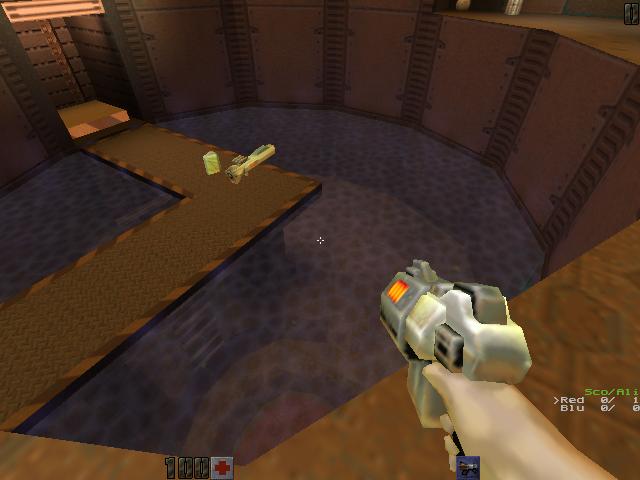
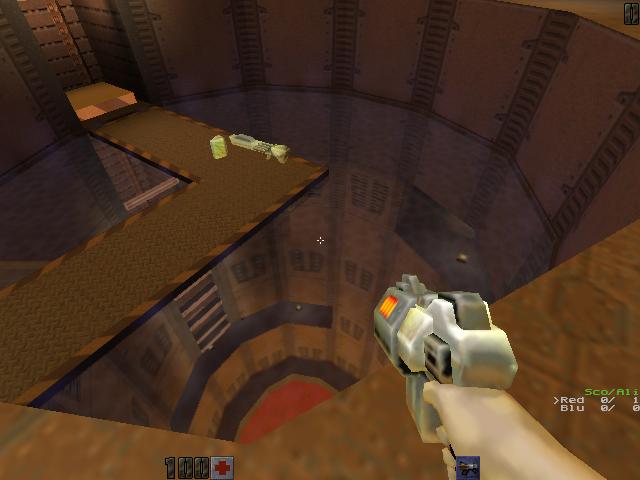
I now have the reflection looking correct if I point the camera at
specified spots. Problems I am experiencing is that certain
polygons are not being rendered at all due to Quake2's
optimizations. I also still haven't figured out why the
reflection was too low in the previous screenshots, so I added some
hacks to force the reflection to be properly aligned. I just
wanted to see it looking correct :) I am feeling pretty
discouraged about why the texture isn't aligned properly because I have
double and triple checked many different things. Reflections on
q2dm1 are still completely broken.
September 5th
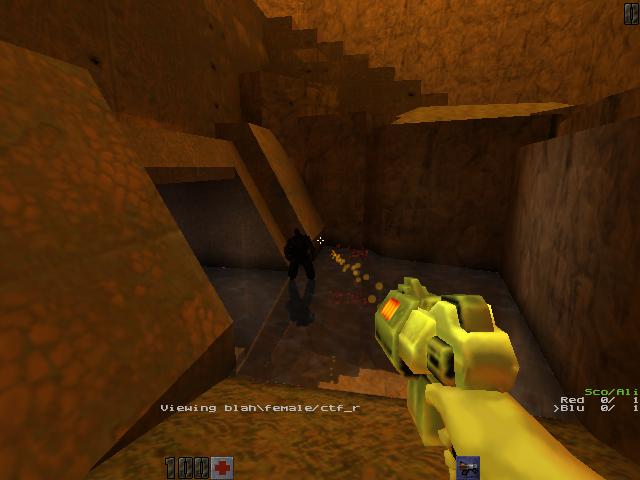
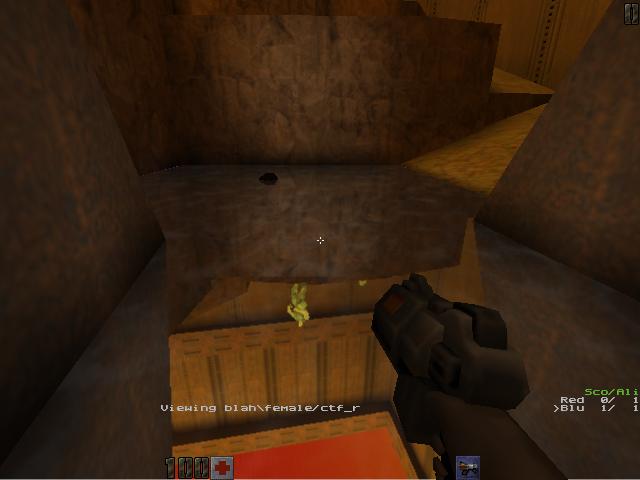
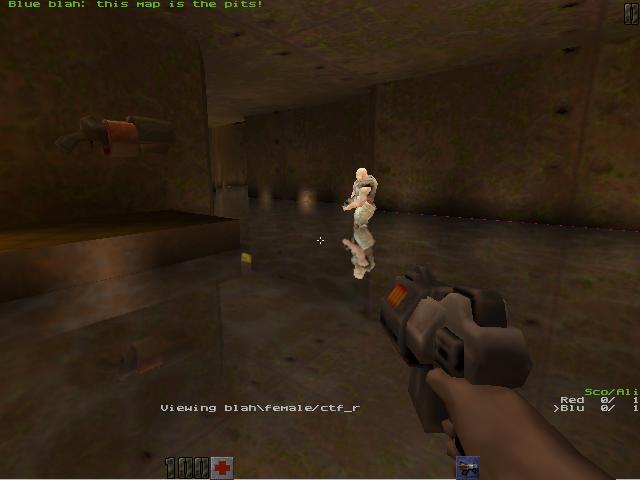
I found and fixed the bug that was requiring me to use manual hacks to
align the texture properly! Now it is fully automated for any
area on the map! Woohoo! To celebrate, I took some
screenshots of q2dm1, as well as one from q2dm5.
September
5th, later that night
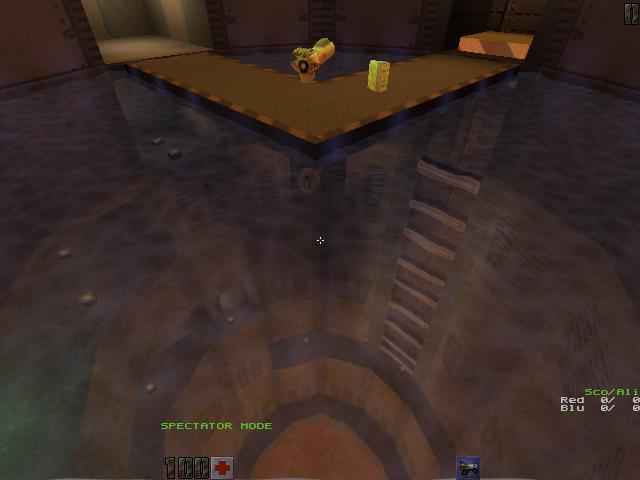
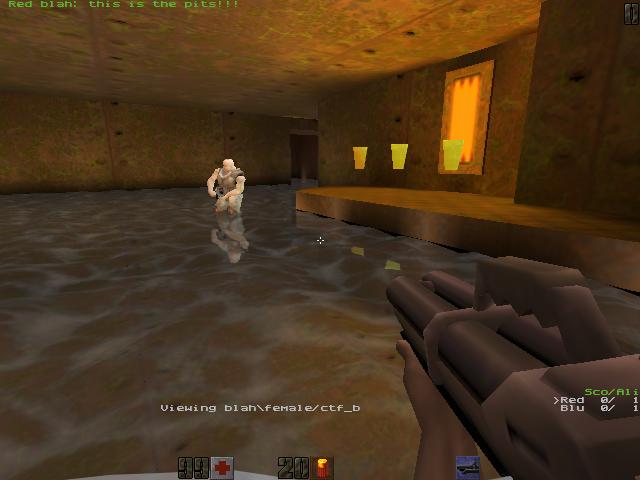
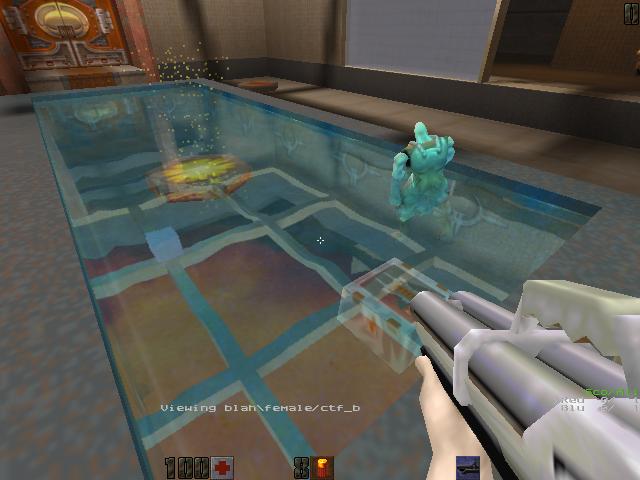
I decided to add waves to the water! It looks pretty awesome,
especially in real-time hehe. It works great on water that is
transparent, but has problems on solid water because there is nothing
being drawn underneath the surface of the water! You can see in
the q2dm5 picture that there is are little black gaps on the border of
the water. I don't believe there is really anyway to get around
this except to recreate the .bsp files and treat _all_ water as
transparent, or at least treat all water as being transparent for a
certain depth (just enough to cover the lowest point of the wave).
TODO:
- Use pbuffers instead of rendering reflection directly to the
screen. I have the code to do this in windows, but don't know how
to do it in glx yet.
- Try to make all polygons in the reflection draw properly, I am not
sure if this is possible due to the structure of the .BSP files









